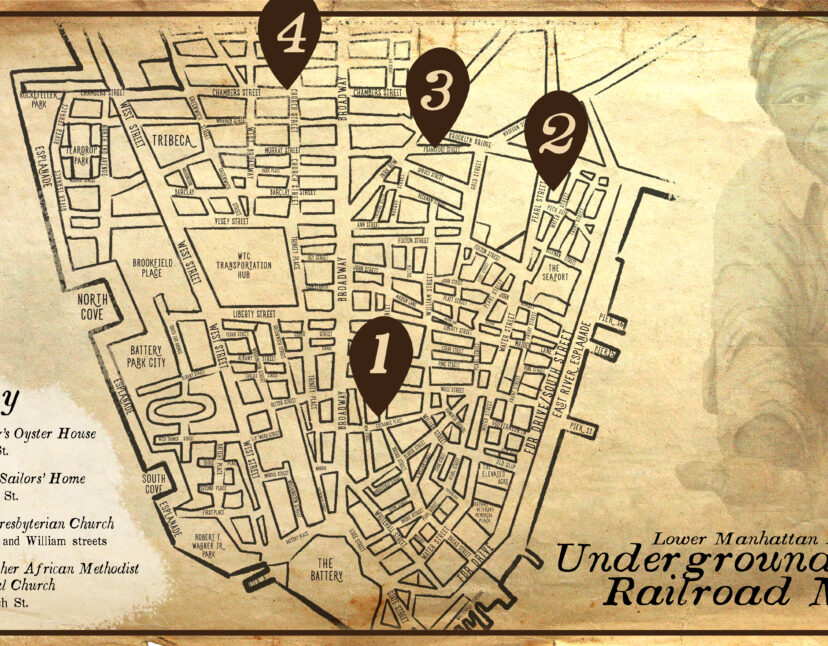A Map of Lower Manhattan’s Underground Railroad Stops

In the mid-1800s, thousands of people escaping enslavement made their way to New York City. But New York wasn’t exactly a safe harbor — the city had its own history with the slave trade, and even after the state abolished enslavement in 1827, some New Yorkers remained wary of the abolitionist movement. Protests over Black institutions and efforts to end enslavement prompted citywide riots, and tensions were high, particularly amid city industries that had profited from enslaved labor.
So, the city became a major hub along the Underground Railroad, with people escaping the South hiding in basements and churches along the way as they sought freedom in safer harbors like Canada. Lower Manhattan was home to four stops, including at Harriet Tubman’s own church and in a secret basement below an elite oyster restaurant. Here’s where to find the historic tracks of the Underground Railroad right in Lower Manhattan.
Downing’s Oyster House (5 Broad St.)
Downing’s Oyster House was a two-part operation. Upstairs, restaurateur Thomas Downing, himself the son of formerly enslaved people, operated a famed eatery catering to New York’s elite, where he served high-quality oysters on fancy linen underneath elaborate chandeliers. In the basement, Downing and his son George helped people escaping enslavement hide on their way to freedom. Few diners knew about the Underground Railroad stop below their feet.
Colored Sailors’ Home (330 Pearl St.)
The building at 330 Pearl St. now looks like a simple residential structure near the Brooklyn Bridge, but in the mid-1800s, it was the Colored Sailors’ Home, a boarding house and employment center for Black sailors. It also became a center of abolitionist activity, where William Powell organized activists and created an Underground Railroad stop. According to some estimates, the home helped more than 1,000 people escape enslavement.
Shiloh Presbyterian Church (Frankfort and William streets)
Shiloh Presbyterian Church was originally founded in 1822 as the First Colored Presbyterian Church; its leader was Samuel Cornish, who also published the first Black newspaper in America, called Freedom’s Journal. In the mid-1800s, the church was a stop along the Underground Railroad, helping dozens of people escape elsewhere to the North. The church was further involved in abolitionist movements, calling for boycotts against products that were produced using enslaved people for labor. A descendant of this original church, St. James Presbyterian Church in Harlem, is still in operation today.
The Mother African Methodist Episcopal Church (158 Church St.)
Attendees at the Mother African Methodist Episcopal Church included Harriet Tubman, Sojourner Truth and Frederick Douglass, making it a rallying point for abolitionist action. It earned its nickname as the “Freedom Church,” thanks to its role as a stop along the Underground Railroad. The church moved to Harlem in 1914, where it’s still in operation today.
Tags: black history month, underground railroad

